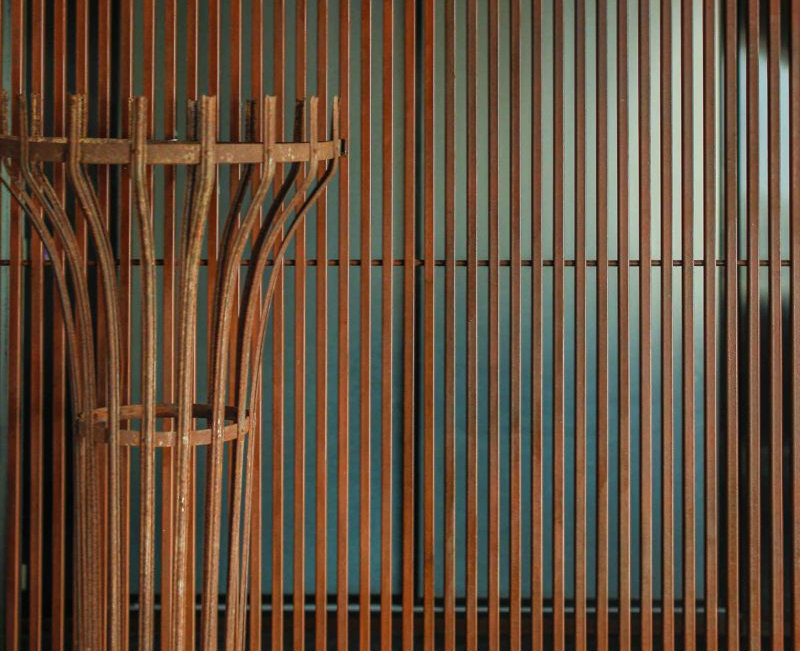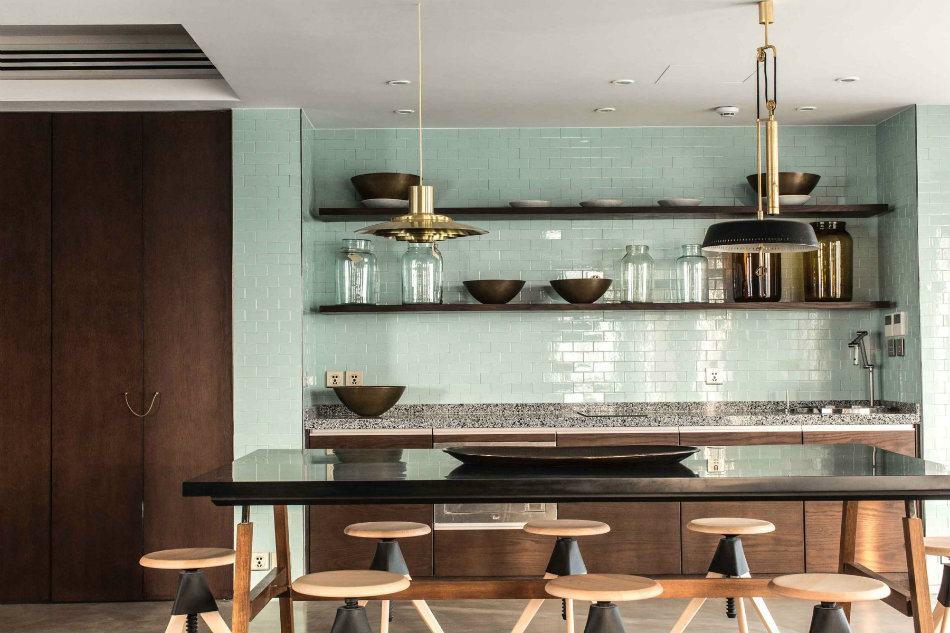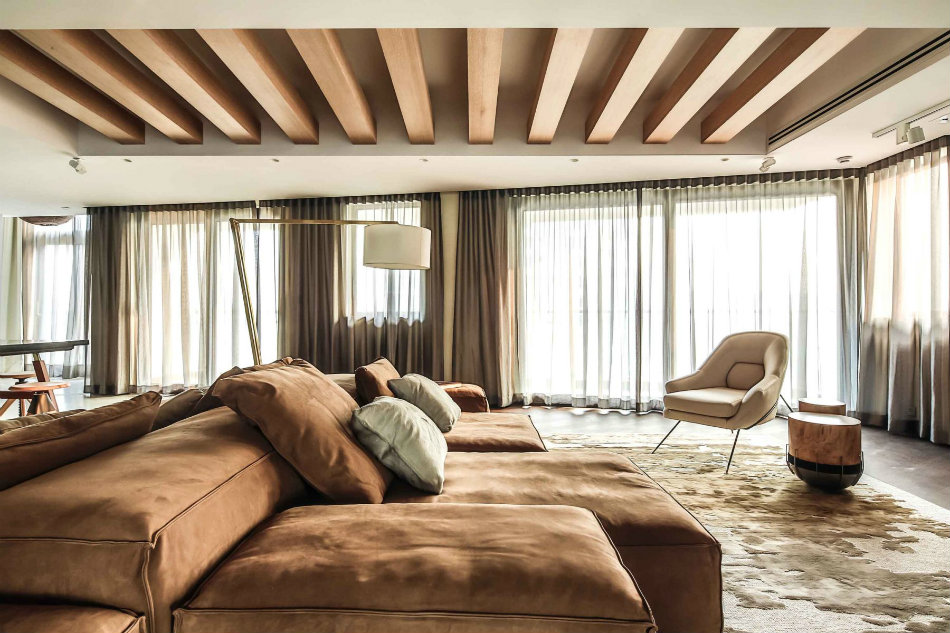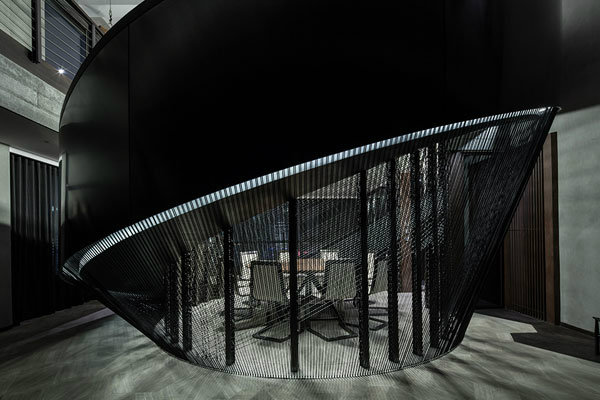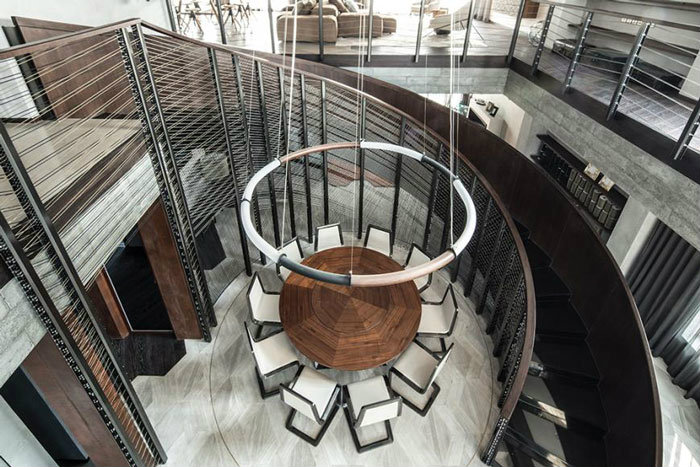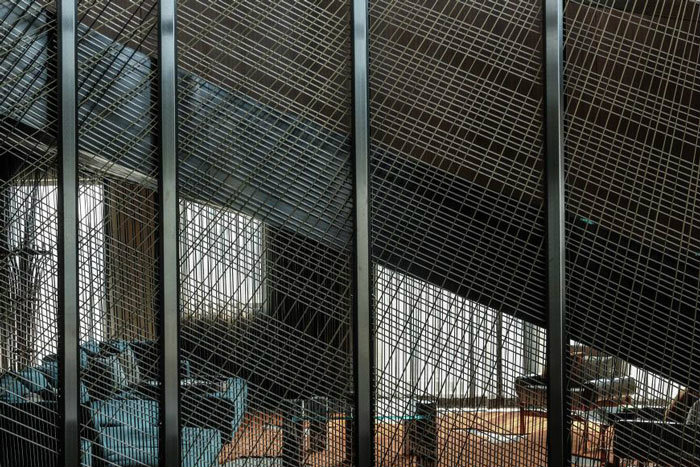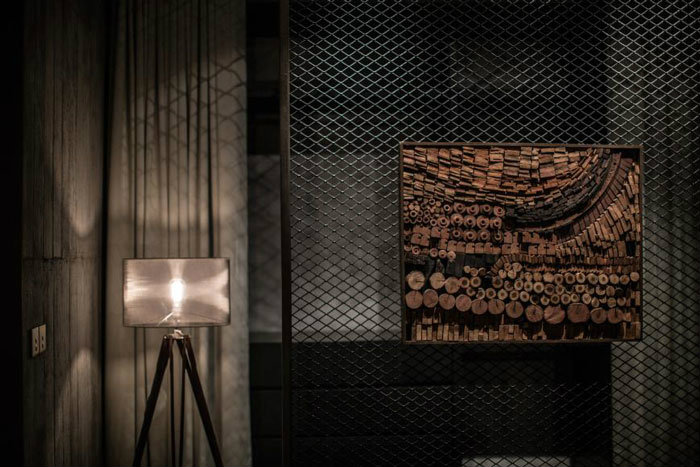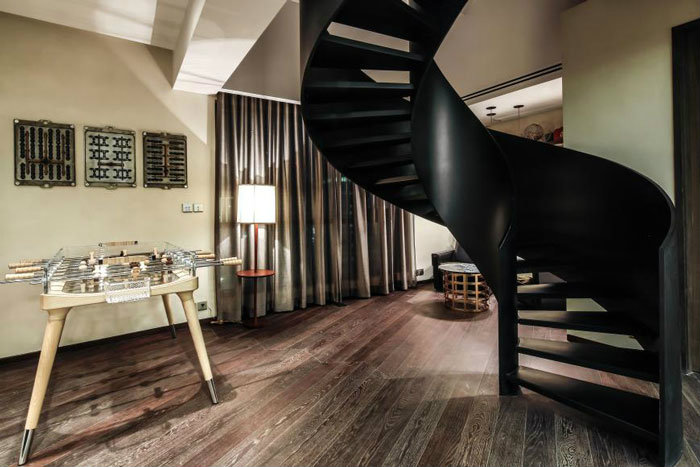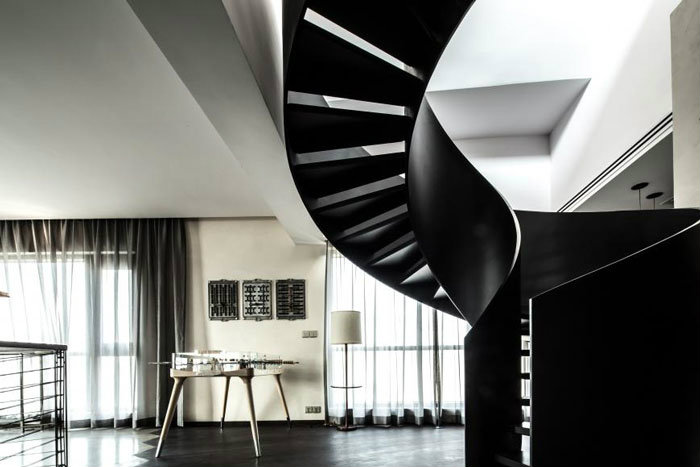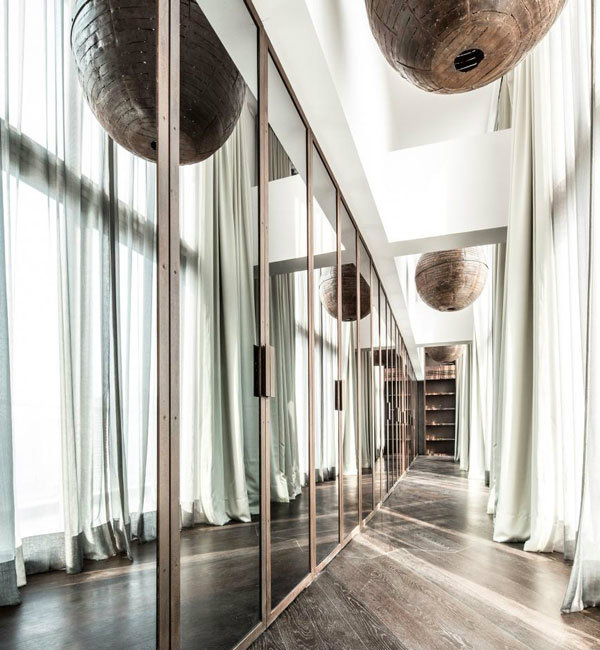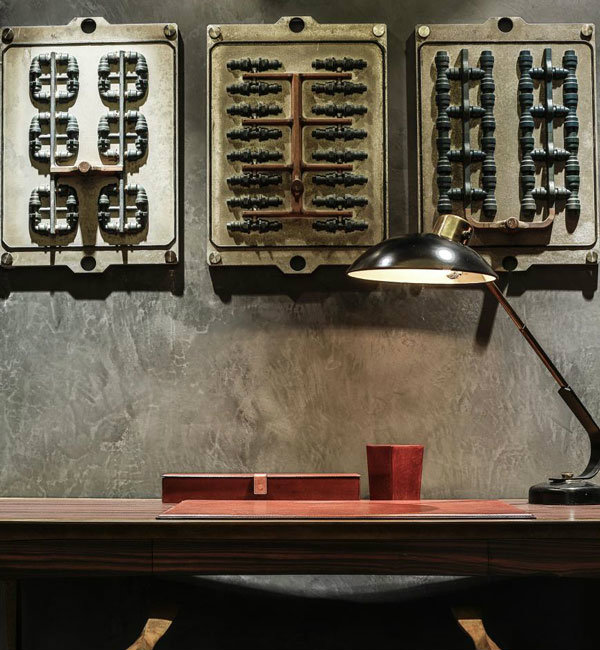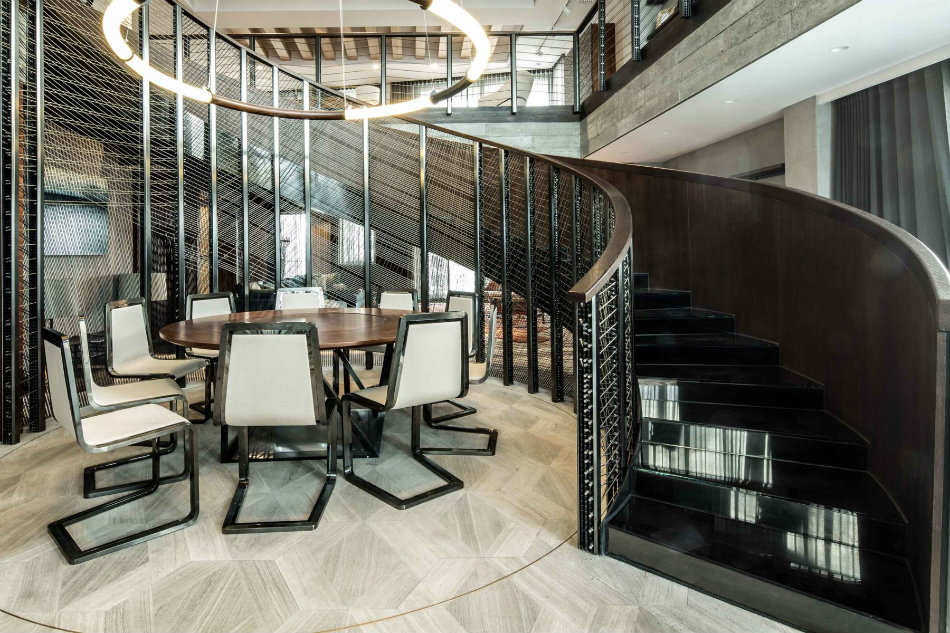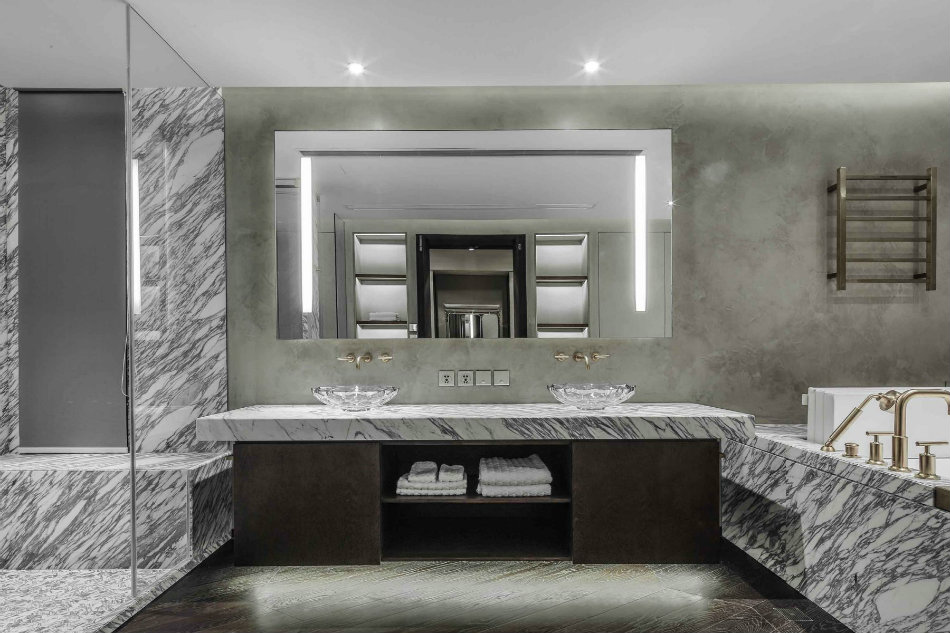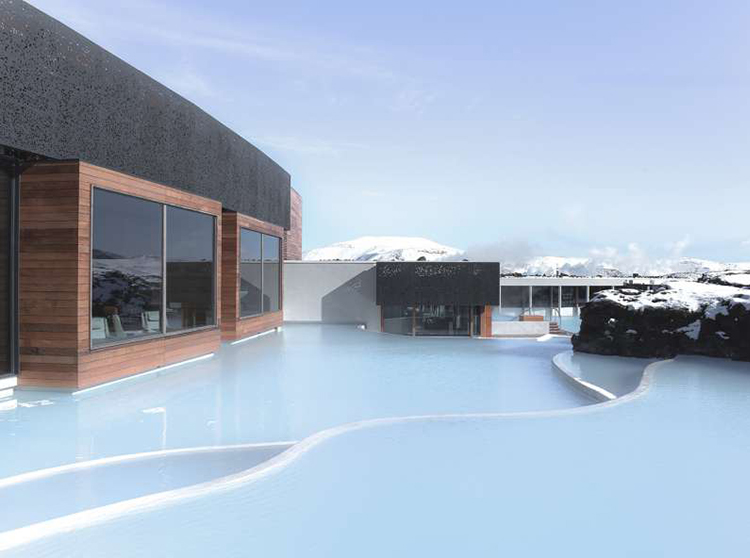A three-storey penthouse with views overlooking the lake and city skyline. It is the home of a family who entertain frequently, so it was necessary to create public areas that feel special, providing a generous but intimate backdrop for parties and dinners. By contrast the more private areas are like a retreat for the family.
“Our goal with the staircase was to create a sense of fluidity, as well as provide a private dining feel within it. It was quite a feat of engineering: we used five kilometres of cabling for the balustrades and we designed every element from scratch, including the hardware and supports.” -Joyce Wang
Wang created a curved staircase up to the roof of the penthouse out of bent sheet metal and lined the living room walls with thin slats of Corten steel.Metal cabling was woven between the balustrade and the baseline of the apartment's central staircase to create a screened-off dining area.
"In the middle of the sweeping circular staircase is the dining area and we wanted the cables to envelope it and create privacy," says Wang. "[We used] five kilometres of metal cabling to create a screen that nestles the diners."
The staircase screen is a reference to the industry the client made his money in, Wang claims."The client for the project was a wealthy businessman who made his fortune selling micro motors," she explains. "For the design of the staircase we really looked at the construction of a motor and how cables are strung inside of it to create this dynamic form."
Wang says that much of the interior of the apartment is informed by the client's history.
"We respected the client's heritage, his personality and love for metals and that is what drove the project," Wang says. "Because there is a manufacturing industry in China, a very very heavy one, [the project] is Chinese in that sense."
The apartment is unusual because none of the bedrooms have windows. Instead, windows line a shared corridor which leads to the bedrooms."We flipped the common notion of where bedrooms should be in residential design," says Wang. "Because the family is very close, we devoted those windows to a corridor space that would be shared by the children of the family."
Wang used reflective screens to allow daylight to enter the rooms, while also providing privacy."We created these one-way mirror screens that allow light to filter into the bedrooms," she says. "But during the day, because there's more light outside than inside, there's [also] a great sense of privacy."

















